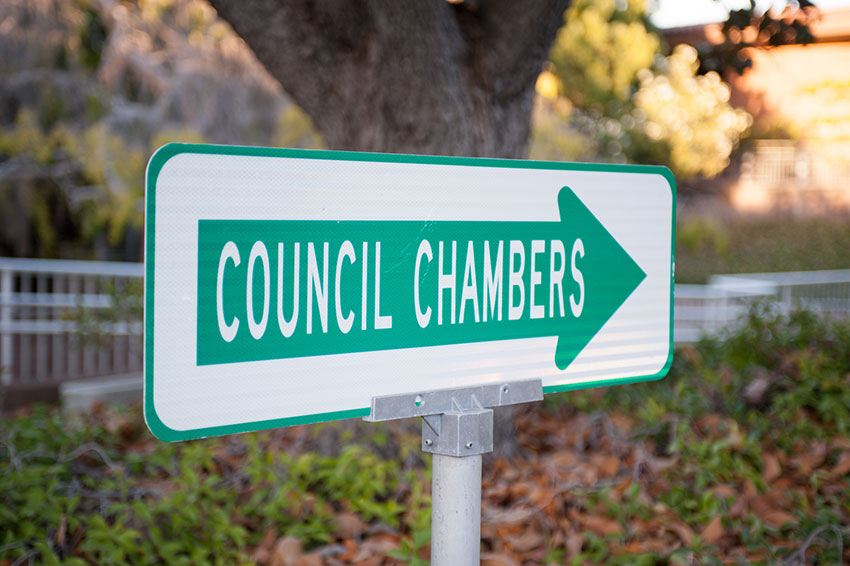RDA Shutdown Goes On..and On
At the current pace of operation, it feels like unwinding the state’s RDA program will take as long as the agency was in operation.
At two meetings last week, the Santa Clara RDA Successor Agency Oversight Board, first, approved an agreement about the disputed $30 million of stadium construction funds; and, second, approved a highly amended Recognized Obligation Payment Schedule – confounding observers as to what the oversight board actually approved. As of press time, there is no written public record of the amended motion.
Agreement Reached on Disputed $30 Million
Two months to the day after voting 4-3 to pull $30 million in RDA funding from the new 49ers stadium project, the oversight board approved a settlement agreement that will provide the RDA money Santa Clara voters approved for stadium construction, albeit over an extended period of time. The 49ers will defer payments and reduce the interest rate on amounts owed them.
In the 5-1 vote, Tax Collector George Putris cast the sole “no” vote.
Money currently being held – about $13 million – will be divided among Stadco and the “taxing entities,” including the Santa Clara Unified School District, in the same proportion as ordinary property tax revenue. The settlement must be approved by the state department of finance, and then state superior court for final judgment.
“This settlement will provide more than $7 million in critical funding to the school district over the next three years,” said Bobbie Plough, Santa Clara Unified School District Superintendent. “We appreciate the 49ers willingness to work out a creative plan.”
The 49ers expressed satisfaction with the resolution, saying “This is a win-win for everyone.”
The agreement didn’t please everyone, however. Santa Clara Plays Fair was there to voice opposition, disputing the board’s power to enter into an agreement and that Measure J had authorized any funds to the stadium project; and further characterizing the settlement as “another secret agreement with the 49ers” and a “shell game.”
The Zero Sum Game: To Recognize or Not Recognize
The next order of business for the oversight board was the current Recognized Obligation Payment Schedule (ROPS) – number three, due in Sacramento on September 1 – necessitating yet another meeting, held Friday morning.
The ROPS determines how much money the successor agency has to pay its debts. If debts aren’t “recognized,” no money is allocated from redevelopment tax increment revenue to pay them – forcing agencies into default or to repay the debts from other revenues.
But less money going for RDA debt means more money for other taxing entities: K-12 and community college school districts, and county agencies and regional agencies, utilities and special districts.
Friday’s discussion revisited whether loans from the City of Santa Clara to the defunct RDA are recognized obligations. The law shuttering the RDAs (ABx26) excluded loans between RDAs and sponsoring cities, and the board disallowed these particular loans last May. However, in July the state legislature passed AB 1484, ostensibly to clarify the provisions of ABx26. The county finance department continues to object to adding these loans to Santa Clara’s ROPS.
Last Friday’s interminably tedious discussion would indicate that, far from clarifying anything, AB 1484 ratcheted up the confusion. “Does the new law expressly prevent us from entering into newly-reentered agreements or does it cover old re-entered agreements, prior to the passage of the law?” asked one board member.
“I believe the intent of 1484, as expressed in numerous provisions over and over again, there is a specific mechanism to deal with city loans,” replied James Williams from the county finance department. Santa Clara RDA attorney Karen Tiedermann attempted to cut through the legalese. “[AB] 1484 does now specifically allow city cash flow loans and does provide that those… will be deemed …an enforceable obligation.”
At the end of the day, the City wants to keep the door open for these commitments by keeping them on the ROPS. “It’s a matter of preserving our rights,” said Santa Clara Mayor Jamie Matthews. “I can’t see an objection to preserving our rights when the law’s not clear.”
Administrative Budget: We Talk, You Pay
The county finance department also objected to Santa Clara’s RDA shutdown administrative budget – currently $4.6 million for the first three ROPS – characterizing it as “grossly inflated;” setting the stage for another brain-numbing half hour. Acting City Manager Ron Garratt countered by noting what some might call a gross inflation of busywork caused by a boatload of RDA shutdown audits about policies “implemented by a council 30, 35 years ago…[Now] we’re asked to explain [it] block by block, driveway by driveway.”
He continued, “It’s intensely time-consuming.” Santa Clara Finance Director Gary Ameling subsequently pegged that time as equal to four full-time employees.
At the outset, oversight board meetings “were set up for once a month through the end of the year,” noted Garratt. “I’ve lost count of the number of special meetings we’ve had to date. I think you can ask your attorney the level of support we provide to her on a weekly basis, sometimes daily basis.”
The oversight board has had 14 meetings since March 23. By contrast, the Santa Clara City Council met 17 times in the same period.
“This is an effort that’s exceeding anybody’s wildest dreams of how much it was going to take to dissolve these redevelopment agencies,” said Ameling. At the present rate, estimating that “we might spend a million dollars in this six-month period to dissolve the agency, I don’t think can be described as ‘grossly inflated.'”
“I have to say, the vast majority of the cost has been shifted to the citizens of Santa Clara to support this board [for] the dissolution and [through] taking the money that we were counting on,” added Mayor Matthews.
You can watch video of these meetings at www.santaclaraca.gov/index.aspx?page=1504.



